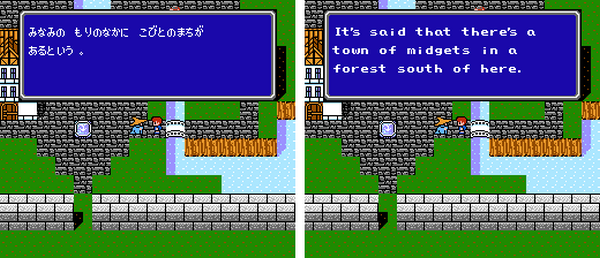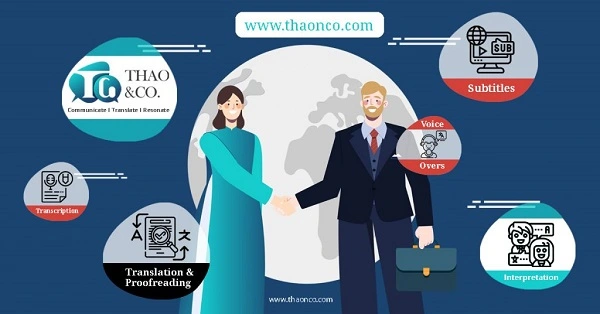Scratching your head about how to bring the game you’ve worked hard on for months, maybe even years, to a wider audience? The most straightforward solution to this prevailing problem would be to make your game as engaging and relatable as possible for all markets, countries, and player bases through translation and localization. But how can translating and localizing your game helps it gain international traction? Where to find this service? Read on to find the answer!
Video games refer to any games that players play and interact with on a digital platform. Some common gaming platforms nowadays include PC, laptops, mobiles, and consoles (Playstation, Xbox, Nintendo, etc.).
Video games encompass a variety of genres such as: action, adventure, strategy, sports, puzzles, etc.
What is game translation and localization? Game translation is the process of rendering the original language of the game into another language more suitable to the target market.
The success of a game in infiltrating and building a player base within a foreign market hinges on the publisher’s ability to eliminate the language barrier, an element that turns most players away from a game not in their native tongue.
The translation must not only be accurate but also preserve the naturalness and the essence of the original language in the game.
When it comes to game adaptation in general, it is important that you know the difference between translation and localization. How do these two adaptation techniques differ?
Game translation means simply translating the original language into another one without making any changes or adjustments.
On the other hand, game localization is a step above pure translation, requiring effective collaboration between the publisher and the translation agency. The localization process may require adjusting many elements to make the game more suitable and relatable to a specific group of gamers without altering or omitting the original spirit and message of the publisher. Elements subjected to changes include:
Audio: When it comes to video games, few people seem to give sufficient credit to the sound department. Every click of a button, every soundtrack, and ambient sound, especially the voices of each character – they all come together to create the allure that makes a game unique. Therefore, publishers often give high priority to adapting the audio in a game such as dubbing dialogues or using specific sounds and compositions that are familiar to the culture of the target market.
Interface: the design and in-game graphics of a game title are amongst the first and most important things players think of when mentioning a particular game. Armed with this knowledge, publishers strive to make their products memorable and approachable for players by tweaking and modifying the game interface. This includes translating and subtitling games.

To effectively tackle the two tasks mentioned above, the linguistic expertise of translation agencies cannot be missing. Before characters can be dubbed or subtitled, their dialogues will have to be translated and localized first. Similarly, changing the game menu to another language requires the direct intervention of professional game translators. Because of this, translation agencies have long entered into a mutually beneficial relationship with game companies, helping them achieve great success.
Why is this service necessary? As mentioned before, adapting a game to make it more suitable for the target market is a vital task that can have a great impact on how well a game performs in any market.
Game translation and localization can benefit game studios and publishers in a variety of ways, including:
The language barrier is often identified as the reason behind a player’s decision not to pick up a game title. At present, the number of multi-lingual players is few and far between while publishers can hail from hundreds of countries, all speaking different languages. Translating and localizing video games are the solution to this problem.
Being able to play a game in their native language will certainly bring immense satisfaction to players, allowing them to enjoy the game to the fullest. Meeting this unique demand guarantees a considerable boost in popularity for your game and leaves a positive impression on gamers across the world.
Translation and localization allow publishers to adjust their games to suit different cultural preferences and customs, making them more well-received by local players.
For example, if a character’s dialogue is merely translated and not localized, it would be extremely difficult to do justice to the original spirit and meaning embedded in each line of conversation as these elements are prone to get lost in translation. Therefore, it is important to localize the game by incorporating small but meaningful cultural elements. If done correctly, conversations between characters will feel natural and native-like, just like how they are intended to be in the original language.
Player retention rate is a crucial statistic that can make or break a game. The better the player experience is, the more likely gamers will return for more. Consequently, the best way to build an active and loyal player base while increasing the retention rate is to translate and localize your game.

Each agency will have its own game translation and localization process for video games. However, a standard process often includes the following steps:
Stage 1 – Game assets are extracted and compiled into a “localization kit”
In this step, assets in need of translation will be extracted and compiled into a “localization kit.” Translators will analyze this localization kit to create a translation guideline and keyword glossary to ensure consistency and cohesion during translation.
Stage 2 – Translate and proofread game assets
This step will be carried out by professional game translators with extensive experience and passion for video games. The translation will thereby be of high quality and accurately convey the original message and meaning. The game will then become more appealing and praiseworthy for gamers across the world.
Stage 3 – Make post-translation adjustments
This step will begin after the translation has been completed. The translated game assets will be reintegrated into the game for QA testing and linguistic review. This ensures the game will be free of bugs and the translation actually makes sense.
Are game translation and localization services expensive? How are they priced? In general, many factors can influence the price of translation and localization services for video games such as:
At Thao & Co., we provide not only superb translation but also many other value-added services for maximum clients’ convenience:
What do clients need to bear in mind when choosing a game translation and localization service? If you are still wondering about this problem, don’t skip through the tips below:
Thao & Co. is one of the most credible translation agencies for you to consider when it comes to game translation and localization.
At Thao & Co., we place great emphasis on service quality. The entire translation and localization process will be done by our team of professional game translators, with many years of experience working with local and international game studios and publishers.

The game translation and localization process at Thao & Co. includes the following 7 steps:
We hope that through our article, you now have a fresh view of game translation and localization, as well as tips to choose the perfect translation agency to meet your demands.
Visit Thao & Co. at our Get a Quote page to receive a free consultation on game translation and localization today!
We provide professional Game Translation and Localization Services in more than 50 languages: